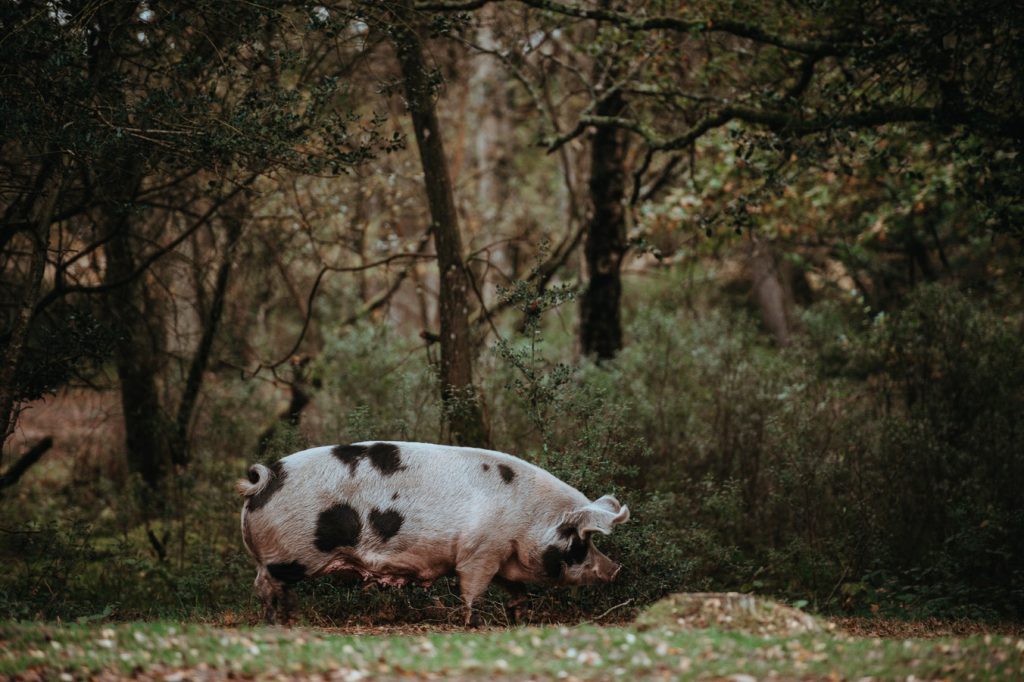Bird Deaths a Setback in Texas Feral Hog Poison Testing
It turns out Texas’ latest wonder poison was a Pig in a Poke.
Times Record News reports: “Field testing of a new feral hog control method experienced a major setback recently after nearly 200 birds were found dead. Justin Foster, Texas Parks and Wildlife Research Coordinator for Region 2, said he has been conducting research on feral hogs for more than 10 years, and has never seen a bird kill of this magnitude.”
These results reconfirm 180-years of experience: Poisons used against wild animals, plants and insects invariably cause unintended by-kills. Much worse is that they harm systems – animals, plants, soil life, and habitats – in ways we do not remotely understand. Nevertheless, wildlife agencies continue to promote them.
Only ‘In a Pig’s Eye’ are Big Wildlife’s toxic chemicals ‘safe’.
NOTE: this article below is from TimesRecordNews.com and can be found here. It was written by Claire Kowalick and published May 21, 2018.
Field testing of a new feral hog control method experienced a major setback recently after nearly 200 birds were found dead.
During a regular agricultural extension report to Wichita County Commissioners, extension agent David Graf reported the issue at a study underway in an undisclosed North Texas location.
Hog-Gone, with active ingredient sodium nitrite, was thought to be the next great hope for feral hog control.
Feral hogs, a non-native animal, can breed rapidly and cause major damage to crops.
Control methods such as fencing or hunting the hogs have proven inadequate to stem the influx of animals.
Commissioners noted hog sightings are on the rise, and they are increasingly becoming and urban, as well as country, issue.
The creatures can tear up backyards and athletic fields, can consume small pets and could be a danger to children and adults.
During a study with hog-activated feeders containing the poison, researchers found that hundreds of dead birds nearby had ingest the poisoned bait.
The product is expected to be a better alternative to the previously tested hog poison containing warfarin – a blood thinning agent.
Sodium nitrite is a product often used for preserving meats. When eaten in large doses over a short period of time, it is toxic to feral swine.
Justin Foster, Texas Parks and Wildlife Research Coordinator for Region 2, said he has been conducting research on feral hogs for more than 10 years, and has never seen a bird kill of this magnitude.
Researchers test poison on free-range hogs
“The Environmental Protection Agency-testing permitted field evaluation was the first use of sodium nitrite as a feral swine toxicant on free-range hogs,” he said Monday morning.
The testing is necessary for the United States Department of Agriculture to gain EPA experimental-use permitting (EUP) for the Hog-Gone product.
The USDA Wildlife Services reports there are more than six million feral swine in at least 35 states. They cause an estimated $190 million in damage each year.
During research, Foster said, concern focused on keeping deer, raccoons and other animals out of the poison-laced feeder system and ensuring the safety of animals who may feed off the poisoned hogs.
The study found success in keeping most non-target animals out of the feeder and they also showed animals who feed off the carcasses of hogs who ingest Hog-Gone were not negatively impacted.
This study was the first time sodium nitrite was delivered on free-range hogs with a feeder system.
How the feeder system works
Foster said the current form of product is a very dense paste, that is scooped from a container.
Swine are encouraged over several weeks to approach and activate the feeder system.
“We found the feeders worked very well. We did not have any breaches of feeders by non-target animals,” he said.
Issue didn’t come from feeder breach
The concern came, he said, when they noticed some poisoned bait was dropped outside the feeder after the hogs ate.
United States Department of Agriculture-Animal and Plant Health Inspection Service Wildlife Services National Wildlife Center Legislative and Public Affairs representative Gail Keirn said, “During the recent bait field trial it was observed that feral swine were not eating the bait as expected and hazards to non-target wildlife were greater than desirable. NWRC scientists and the manufacturer of the bait are reformulating the bait to make it more palatable and to avoid crumbling – think bite-sized marshmallow shape and composition versus crumbs.”
The reformulation should help reduce the number of crumbs from the bait that could affect animals other than the feral swine.
Small, grain-eating grassland birds ate the poisoned bait and at least 171 birds died at 14 feeder stations.
Sparrows and blackbirds were the main birds affected by the crumbs from feeder stations.
“While the number of birds taken is within the tolerances described within the environmental assessment, it is not acceptable to us as wildlife biologists,” Foster said.
Upon discovering the bird deaths, the research team immediately began efforts to mitigate the bird losses.
Previous study focused on how poisoned hog may affect turkey vultures or other carnivorous animals that feed on the flesh.
“We see a negligible risk of acute mortality from consuming hogs who ate sodium nitrite bait,” he said, “We view this as critical and important, however it is not the largest hurdle that this team or any other has undertaken. We have some options to discourage attraction or availability without impacting palatability or potency.”
Bird kill may delay project by years
The initial goal was to have the sodium nitrite bait registered for use with the EPA by 2020-21. Keirn said, “Researchers will conduct additional studies to ensure that bait modifications prevent hazards to non-target birds. EPA has also just recently designated the bait as a food-use product and is requiring additional studies to ensure human safety. It is likely these activities will delay the EPA registration/permitting process by approximately two years.”
Foster said the feral hog issue is a major concern, especially here in Texas where the hog population is growing exponentially.
“You are limited by season and can only test in certain places and times to attract pigs. We may only get an opportunity (for study) one or two times a year,” Foster said.
The USDA Wildlife Service reports trapping and hunting are not adequate means of controlling the hog population because studies show at least 70 percent of the feral swine population would have to be removed each year to prevent population growth.
As hogs move into more densely populated areas, they are becoming a concern for everyone, not just farmers and ranchers.



